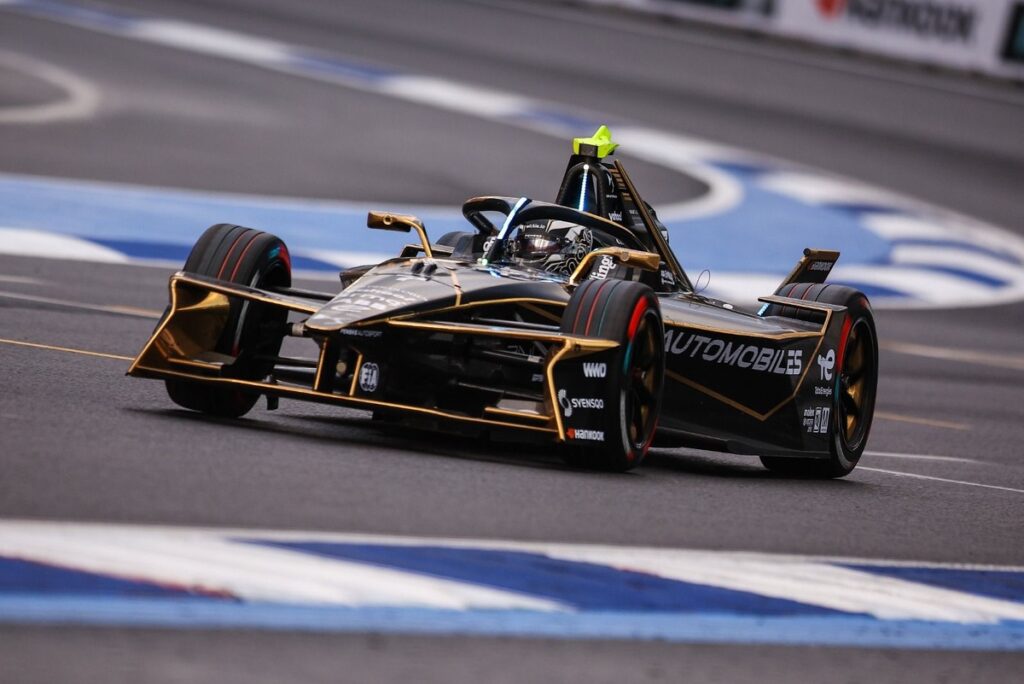Jean-Eric Vergne and Max Guenther set a strong pace in the second round of the Formula E World Championship in Mexico City. However, just as a podium finish seemed within their grasp, a late-race safety car intervention disrupted their plans.
Mexico was hosting a Formula E race for the ninth time, but it was a first for the Gen3 EVO electric single-seaters.
The spectators turned out in force, bringing their legendary good humour and creating a unique atmosphere. This atmosphere of excitement galvanised the Franco-American DS Penske team, which was determined to bounce back after a less-than-expected performance in Brazil last December.
“After the frustrating race in Sao Paulo, where we could have been aiming for some very good results, we were determined to score some important points in Mexico City,” said Eugenio Franzetti, Director of DS Performance.
“This weekend, our starting positions on the second and third rows gave us hope of a good result. Even if race circumstances thwarted our plans, we are satisfied with the points we collected, which are synonymous with consistency and reliability. I’m convinced that our efforts will bear more fruit in the coming races.”
Solid performances despite unforeseen circumstances
The first test session, traditionally dedicated to cleaning up the trajectories and observing the competitors, gave both DS Penske drivers the opportunity to test the 300 kW and 350 kW modes of their single-seaters.
On Saturday morning, the German driver broke into the top 10 in the second practice session, before the two drivers moved into Group B, where Guenther set the fastest time.
DS Penske at the Mexico City E-Prix
Photo by: DPPI
Vergne just missed out on the top four, finishing just 0.03s behind Antonio Felix Da Costa’s Porsche, but was granted a reprieve when Nick Cassidy’s (Jaguar) lap was invalidated.
The DS Penske team-mates faced each other in the quarter-final with Vergne dominating, only to be knocked out by Da Costa in the following stage.
A promising race disrupted by the safety car
Starting from third and sixth positions, Vergne and Guenther showed great tactical mastery.
Thanks to the Attack mode, which activates 350 kW of power and four-wheel drive, the DS Penske cars were well placed to score a good result. However, the strategy for activating Attack mode was affected by two interventions by the safety car.
While Vergne and Guenther were still in attack mode for six minutes with 10 laps to go, an incident involving David Beckmann (Cupra Kiro) led to the first neutralisation of the race.
Stuck behind the safety car, they were unable to exploit their extra power as the clock ticked away. Despite a late-race comeback attempt, a second safety car intervention, caused by Mitch Evans’ Jaguar coming to a halt, sealed their fate.
In the end, the two drivers finished in fifth and sixth positions, revealing the potential of their single-seaters, but also their frustration in the face of external events.
On February 14 and 15, Formula E heads to Saudi Arabia for a brand-new circuit in Jeddah. DS Penske, which often performs well in unfamiliar contexts, hopes to take advantage of this configuration to highlight its potential.
In this article
Didier Laurent
Formula E
DS Penske
Be the first to know and subscribe for real-time news email updates on these topics
Subscribe to news alerts
Read the full article here

